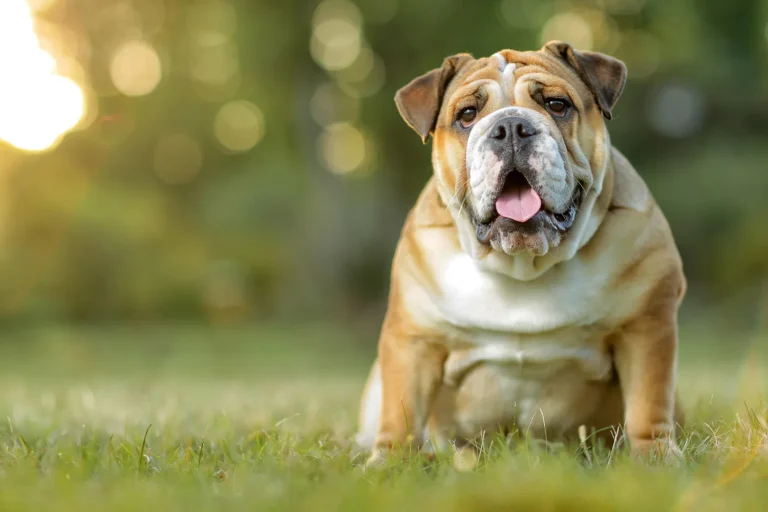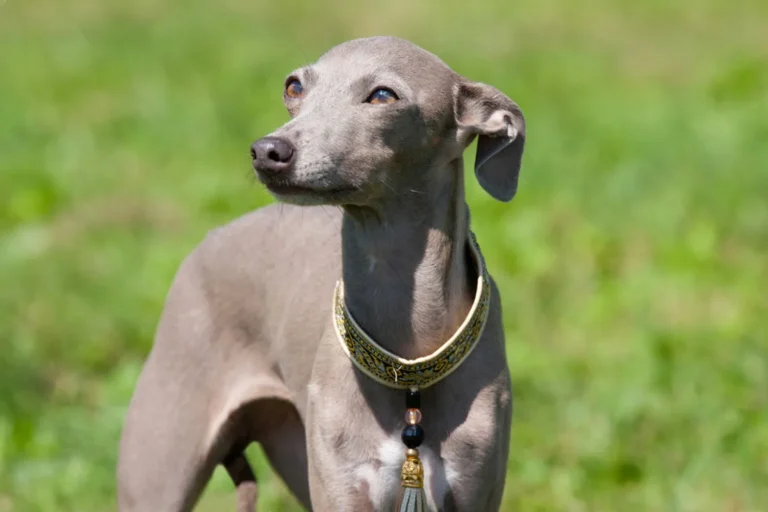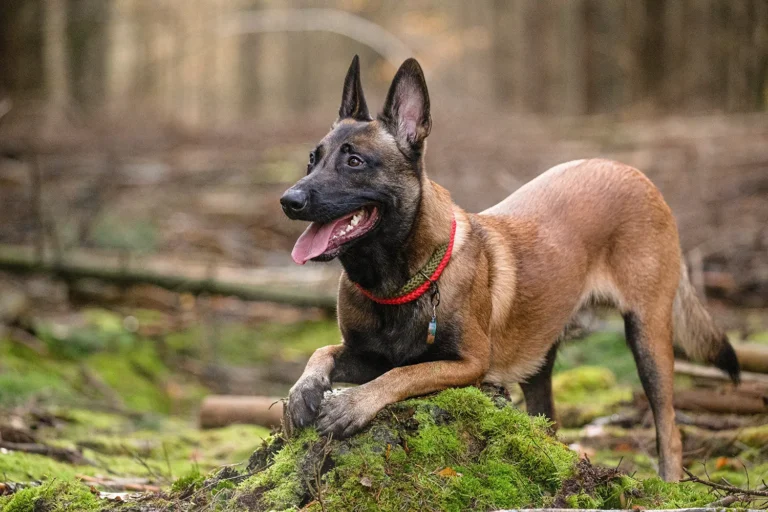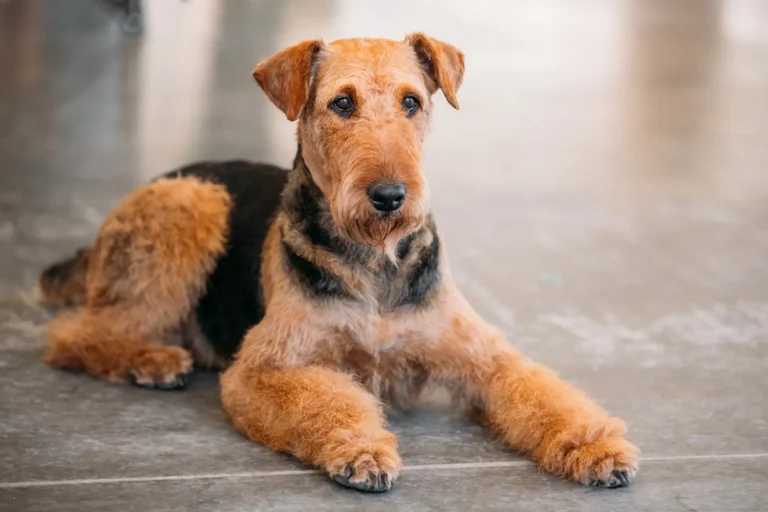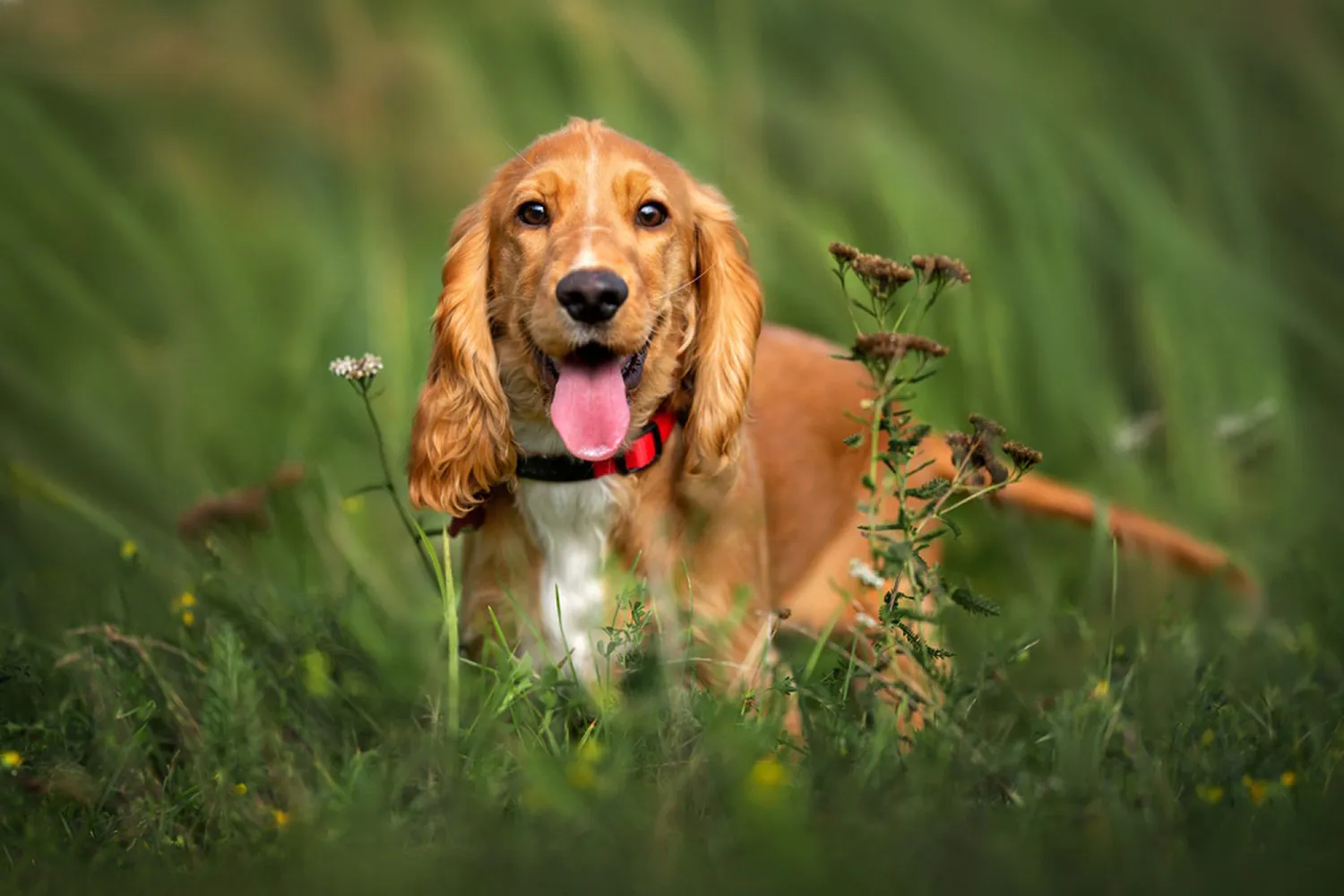
If you’re sniffing around for English Cocker Spaniel info, you’re in the right spot. This cheerful breed wears a few nicknames Merry Cocker and simply Cocker and trust me, they live up to that “merry” part. I still remember the first time I met one at the park: a blur of silky ears and a nonstop tail wag that could power a small fan. Kind natured and wonderfully affectionate, they’re the sort of dog that melts into your lap after a good play session and looks at you like you’re their whole world.
They’re energetic, too, which is part of their charm. A brisk walk and a game of fetch (or three) keeps that happy sparkle in their eyes. My friend in Sydney swears her Cocker is the unofficial greeter of the neighborhood, and it’s no surprise this breed is hugely popular in Australia and around the globe. If you bring one home, plan on regular outings, some fun training games, and a bit of ear care after messy adventures. Do that, and you’ll have a devoted companion who turns everyday moments into mini celebrations.
What is the history & origin of the English Cocker Spaniel?
Before they were sofa snugglers and neighborhood charmers, English Cocker Spaniels were busy little bird dogs trotting through British fields. They come from a broad family of spaniels bred across Britain and beyond to be reliable, loyal companions in the field, with roots that may stretch back to the 16th century. Hunters prized them for helping flush and retrieve waterfowl and game birds, and it shows give an English Cocker a puddle and a breeze full of scents, and they look like they’ve just clocked in for work.
In the early days, spaniel litters weren’t neatly divided by breed the way we see today. One litter could produce both springer spaniels and cocker spaniels, and size was the main difference. The larger pups became “springers,” named for their knack for springing birds from cover, while the smaller, nimble dogs specialized in working woodcock hence “cockers.” A breeder I met in the countryside once told me her grandfather sorted pups by size and job in the same barn, then took his favorite “cocker” straight to the hedgerows at dawn.
By the 1890s, the spaniel family tree started getting official labels, with recognition for both the Springer and the Cocker as distinct types. Within the Cocker group, lines developed on both sides of the Atlantic, and in time the American Cocker Spaniel emerged. If you’re squinting at a photo and trying to tell English from American, here’s a handy snapshot: American Cocker Spaniels typically have a longer, more flowing coat, fuller eyes, and a rounder skull. The English Cocker kept that slightly sportier, field ready look. I remember meeting my friend’s American Cocker at a holiday party gorgeous feathering, like a walking velvet curtain then going hiking the next day with an English Cocker who splashed through every stream like it was his personal mission.
The American Kennel Club once grouped the two together, but today the English Cocker Spaniel is recognized as a separate breed. One tradition that changed over time is tail docking. In the past, Cockers commonly had their tails docked, but that practice has been banned today and is only allowed for medical reasons. You’ll still see docked tails in old photos, which always makes me appreciate the cheerful, constantly wagging natural tail even more.
If you’re thinking of living with an English Cocker, their history is a great guide to keeping them happy. They love scent games, retrieving, and anything that mimics a day in the field hide treats around the yard, toss a soft dummy, or try beginner nose work. And if there’s water? Let them have their moment. Just keep a towel by the door I learned that the hard way after one triumphant, very muddy “woodcock reenactment” in my garden.
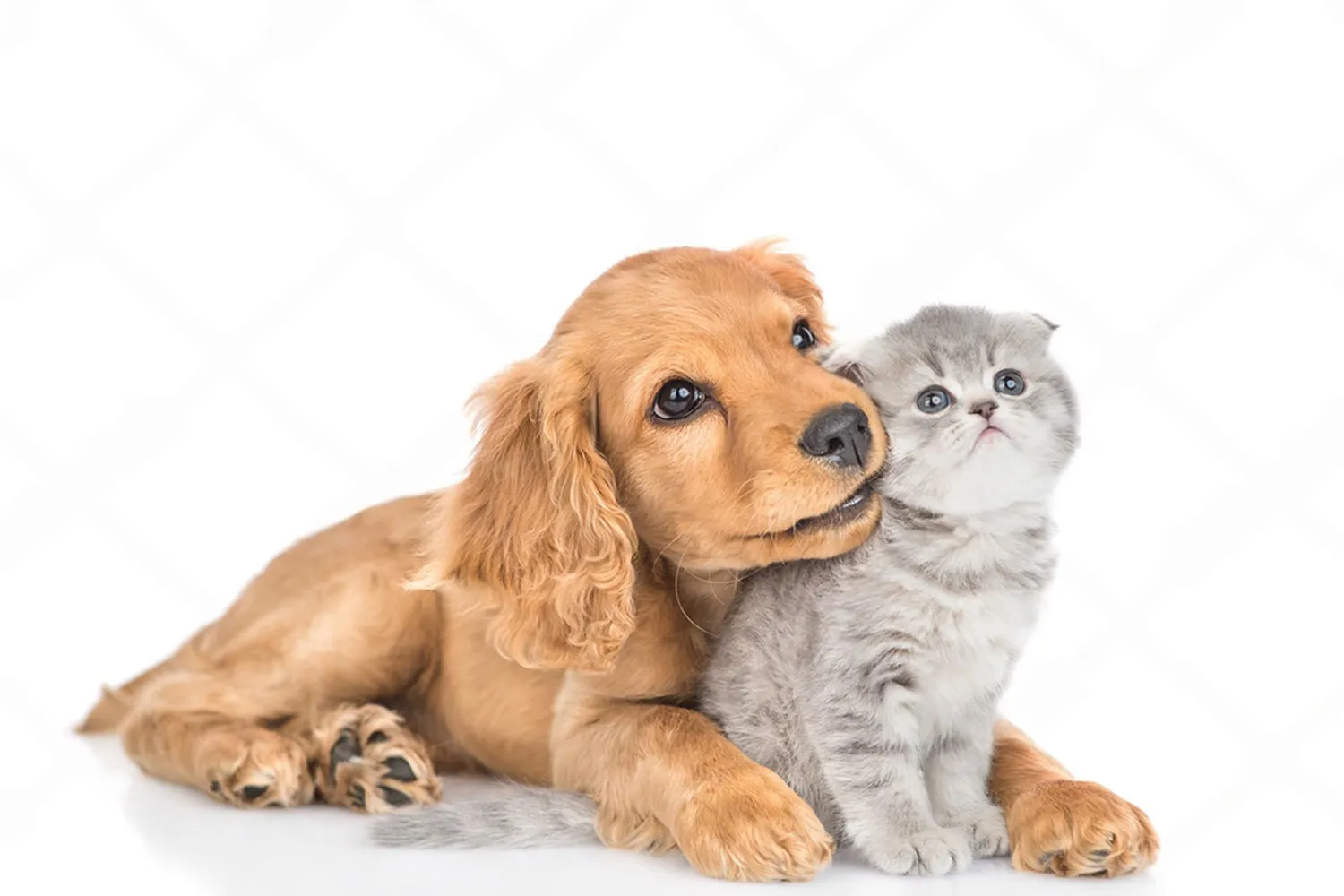
What Is an English Cocker Spaniel?
The English Cocker is a cheerful, medium sized dog with those unmistakable long, velvety ears and a tail that seems to have a mind of its own. The name “Cocker” comes from their history as woodcock hunters in England, and that birdy instinct still peeks through today they’re naturals at sniffing out a scent and turning a simple walk into a little adventure. I still laugh remembering the first Cocker I met at a park: she trotted up like we were old friends, ears flopping, eyes sparkling, and within five minutes had convinced half the crowd to toss her a ball.
If you’re looking for a companion who’s affectionate and eager to please, the English Cocker is a lovely match. They thrive on togetherness and do best with regular exercise think daily walks, a bit of fetch, and some mental games to keep that smart nose busy. Even if you live in an apartment, you’ll appreciate how adaptable they are as long as they get their outings and a cozy spot to curl up after. My friend raised her Cocker in a city flat, and the secret was a reliable routine: morning sniffari, midday play, evening cuddle.
Joining the English Cocker Spaniel Club can be a game changer. You’ll find training tips, meet ups, and a community that “gets” the breed’s blend of sweetness and spunk. It’s also a great way to learn about responsible breeders and rescue options. A quick note from experience: those glorious ears benefit from regular brushing and checks, especially after a romp outside.
Stick around, because below I’ll share more about what to expect from this merry little hunting dog, so you can decide if the English Cocker is the right fit for your life.
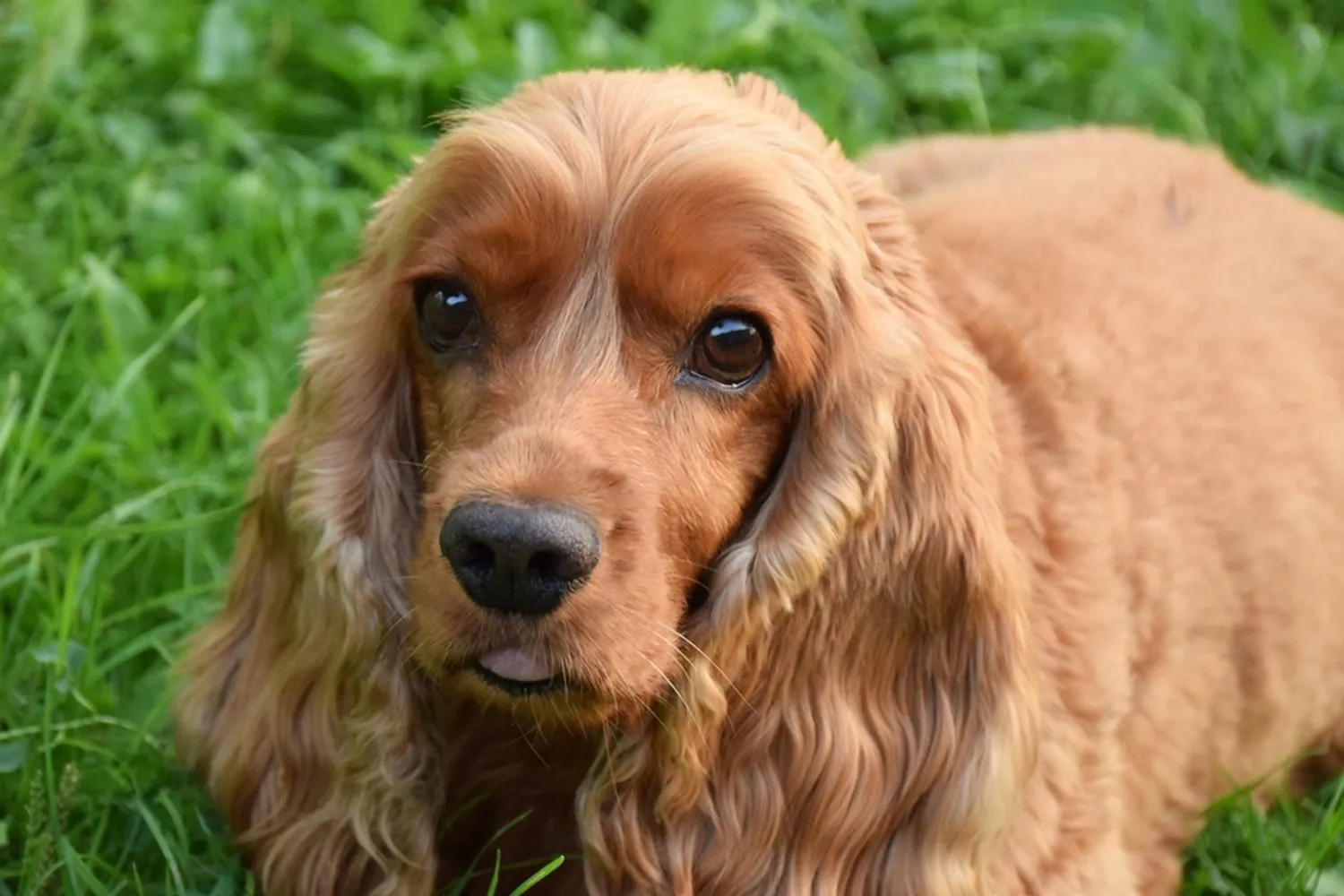
Who Is an English Cocker Spaniel Best For?
If you want a cheerful, busy little shadow who’s always up for a walk, a game, and then a cuddle, the English Cocker Spaniel is your kind of dog. They’re happiest with plenty of daily exercise and something to do think brisk walks, a bit of fetch, and a few short training sessions sprinkled through the day. They love using their noses, too. I used to hide bits of kibble around the living room, and my friend’s Cocker would trot from clue to clue, ears flopping like little flags, completely delighted.
Training tends to come naturally with this breed because they’re eager to please and very tuned in to people. With gentle guidance, clear routines, and lots of praise (and maybe a few treats), they pick things up fast. I once taught a neighbor’s English Cocker “go to your mat” over a weekend just by keeping sessions upbeat and short. They’re a sensitive sort, so positive reinforcement really brings out their best.
One of the big perks is how adaptable they are. Cockers can thrive in both houses and apartments as long as they get their daily outings and mental stimulation. I met a lovely English Cocker in a New York park who would jog two miles with his owner, then nap under a café table like a perfect gentleman. They’re a popular choice for first time dog owners because of their amenable nature friendly, loyal, and keen to be part of the family routine. If you’re new to dogs, a puppy class and a consistent schedule will set you both up for success.
A quick note on care: their silky coats and long ears appreciate regular brushing and ear checks, which doubles as cozy bonding time. If you enjoy an affectionate, trainable companion who’s as happy exploring the neighborhood as snoozing by your feet afterward, the English Cocker Spaniel fits beautifully.
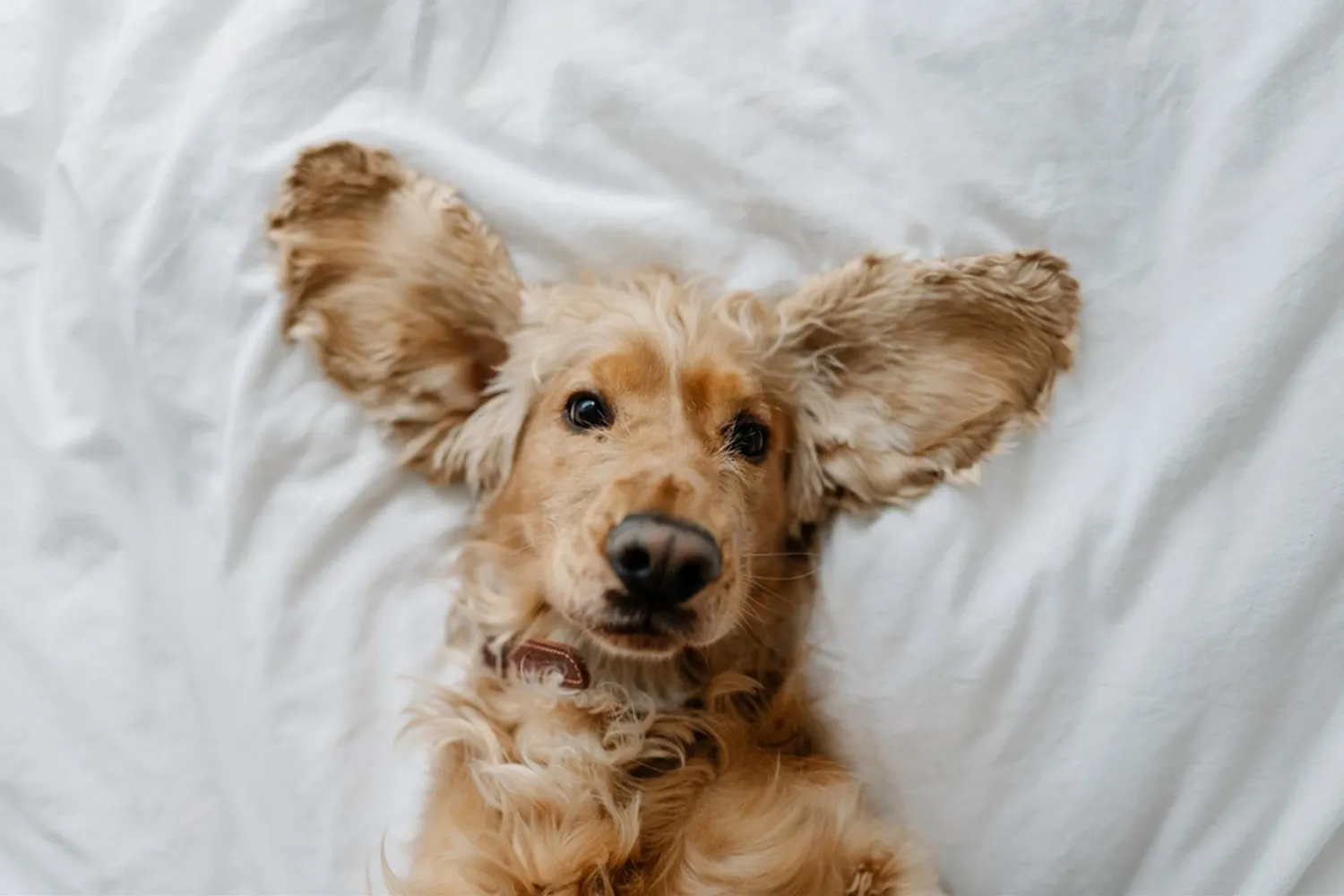
English Cocker Spaniel Grooming & Shedding
If you’re bringing an English Cocker Spaniel into your life, plan on a regular date with a groomer and your vacuum. Their beautiful, silky coats don’t keep themselves in order. Most Cockers do best with professional grooming every 6-8 weeks to keep the feathering neat and mats at bay, and that can add up over the year. I tried stretching appointments once, thinking I could get away with “just a quick brush.” Two weeks later I was untangling tiny knots behind the ears while my Cocker gave me the most dramatic sighs you’ve ever heard.
Between appointments, a few simple habits make a huge difference. A good slicker brush and a metal comb are your best friends. Give the coat a quick brush 3-4 times a week, and daily during peak shedding. Pay extra attention to the feathering on the ears, legs, and chest those silky areas love to tangle. After muddy walks, I run a damp microfiber cloth over the legs and belly, then blow dry on low to prevent damp mats. And don’t forget ear care: those lovely floppy ears can trap moisture and debris, so a gentle weekly check and wipe keeps things fresh. A groomer in my neighborhood showed me how to trim the hair between the paw pads and around the feet it keeps burrs out and the kitchen floor cleaner, too.
Shedding is part of life with an English Cocker Spaniel. You’ll see loose hair year round, with a heavier “confetti season” in autumn and spring. My friend’s Cocker, Molly, turns the hallway into a runway of golden fluff every April, so we switch to daily brushing and add a quick pass with a de shedding tool to catch the undercoat. Little tricks help: keep a lint roller by the door, use washable throws on favorite nap spots, and brush outside if you can let the breeze carry away some of that extra fluff. A balanced diet and regular baths (every 4-6 weeks or as needed) keep the coat in good condition, which also makes the shedding more manageable.
One last tip if you’re feeling adventurous: ask your groomer about the difference between clipping and hand stripping for Cockers. Some coats look best when hand stripped, others do fine with a tidy clip, and a pro can guide you. I once watched a groomer hand strip a working Cocker in under an hour like watching a sculptor reveal a statue under all that fuzz. However you choose to manage it, a little routine goes a long way, and the payoff is a silky, happy dog who turns heads on every walk.
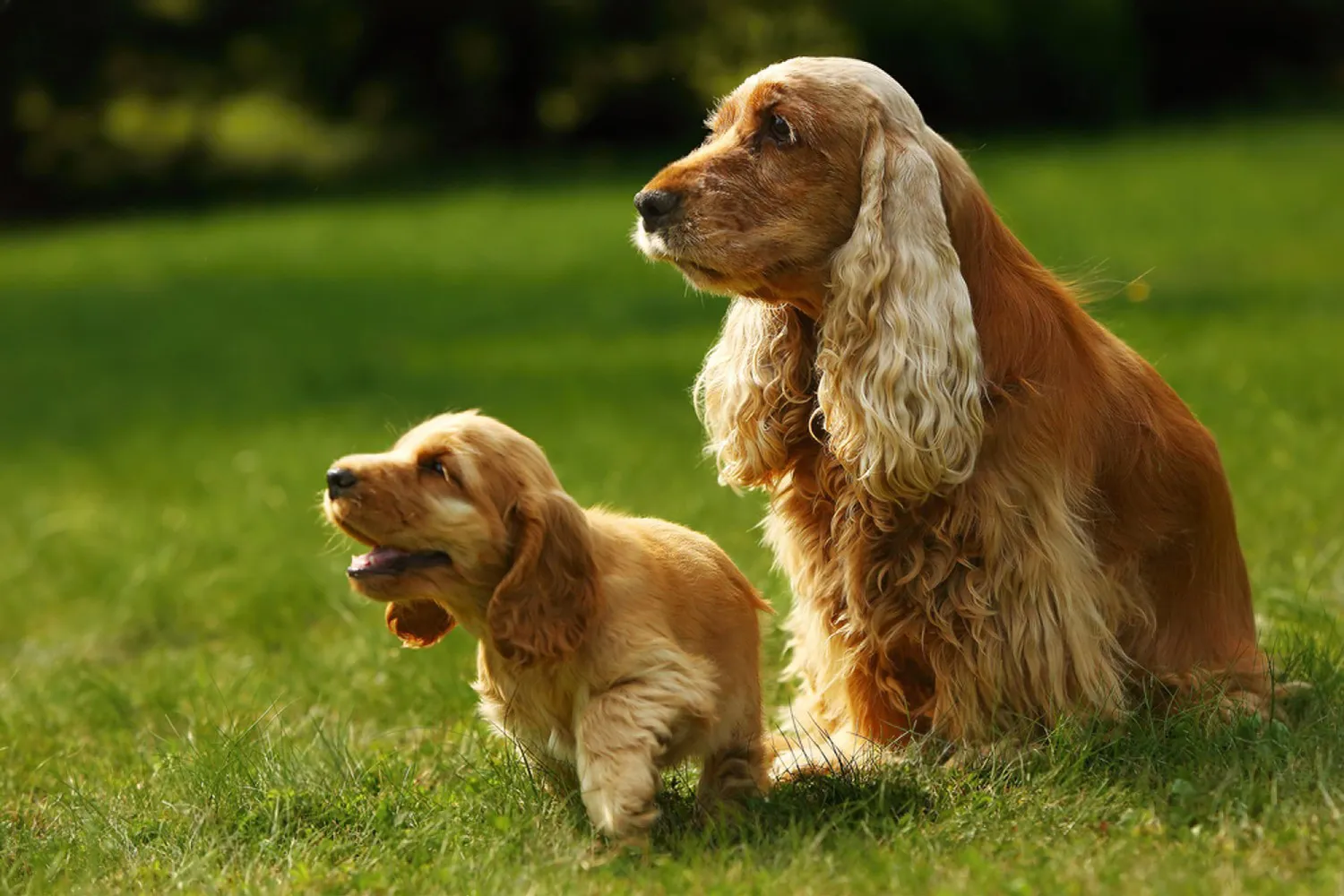
Do English Cocker Spaniels Bark a Lot?
English Cockers can be on the chatty side. Some are soft spoken and only bark when there’s a good reason, while others have plenty to say about doorbells, squirrels, and the mail slot. It makes sense when you remember their gundog roots alerting and excitement are in the job description. If you’re weighing this breed for a quieter home or apartment life, it’s smart to plan for a bit of voice and see how that fits your routine.
That said, you can guide their “commentary.” Regular exercise and sniffy walks work wonders; a tired Cocker is a quieter Cocker. I taught mine a “thank you” cue followed by “quiet,” and with a little patience (and a lot of treats), she learned to hush after the first alert bark. Managing triggers helps too frosted window film for the street facing window, a chew or puzzle toy during peak delivery hours, and greeting guests calmly instead of turning it into a bark fest. A friend’s Cocker used to announce every elevator ding until they practiced mat training by the door. Now she gives one dignified “woof,” then settles like a little pro. If barking tolerance is low where you live, meet a few Cockers, talk to breeders or rescues about temperament, and choose an individual whose vibe matches yours.

Average Weight and Height of English Cocker Spaniels
English Cocker Spaniels sit in that “just right” middle size big enough for adventures, small enough to scoop up for a cuddle. Most adults, male and female, typically weigh between 11 and 14 kg (about 24-31 lb). For height, females usually stand around 34 to 37 cm at the shoulder (roughly 13.5-14.5 inches), while males are a touch taller at 37 to 39 cm (about 14.5-15.5 inches).
I remember when my Cocker, Maple, hit her grown up stats right at 12 kg and barely to my knee and she could still leap onto the couch like a spring. One thing I learned quickly: all that silky feathering can hide a bit of extra fluff. Run your hands along their ribs; you should feel them without poking. A visible waist from above is a good sign, too. If you’re unsure about the number on the scale, I like the old “weigh yourself then weigh yourself with dog” trick and subtract.
For measuring height, have your Cocker stand square on a flat floor and measure to the withers (the top of the shoulder). And don’t be surprised if they look different side by side field bred lines can be a little leaner and more athletic looking, while show lines may appear a bit stockier still well within those typical ranges. As they grow (most fill out by 12-14 months), keep portions sensible and exercise regular. A daily sniffari plus a game of fetch did wonders for Maple’s waistline and her wiggle meter happiness.
https://en.wikipedia.org/wiki/English_Cocker_Spaniel
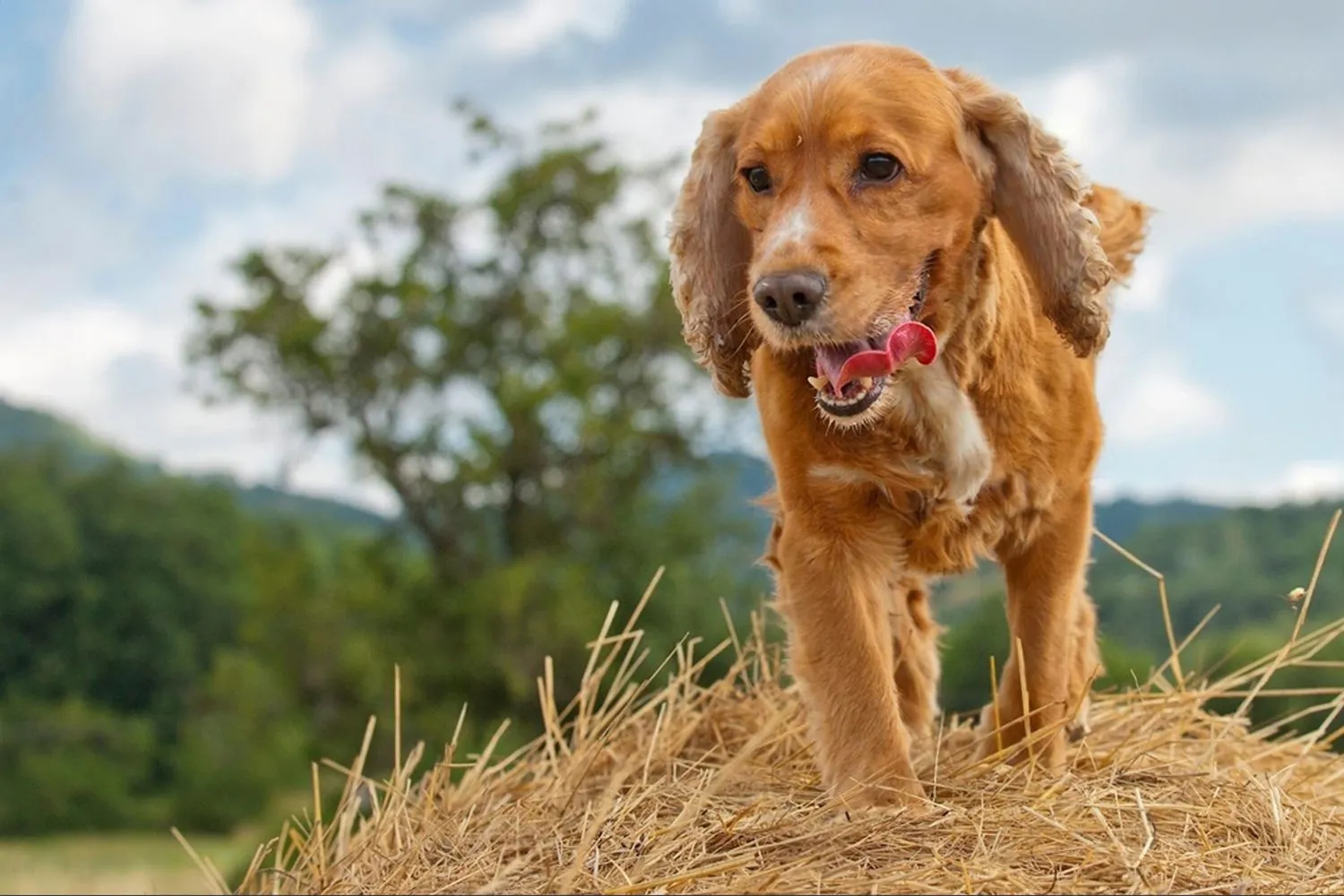
Are English Cocker Spaniels Easy to Train?
Their sunny, eager to please nature makes training a real joy. My first Cocker, Daisy, used to wag so hard during “sit” practice that her whole back end would shimmy she just loved figuring out what I was asking. That enthusiasm is pretty typical of the breed, and it’s a big reason they tend to pick things up quickly.
The key is to start early with basic obedience and stick to a routine. Same cues, same rules, every day. Cockers are sensitive souls, so keep your tone warm and encouraging think cheerleader, not drill sergeant. Lots of praise, a tiny treat or two, and a happy “yes!” go a long way. I like to mix in little play breaks after a good rep, which keeps their tails wagging and their brains engaged.
Set them up for success by beginning in a quiet space with minimal distractions. A calm kitchen, five to ten minute sessions, and clear, simple cues are perfect for those first lessons. Once they’ve got it, gradually add in more distractions the backyard, then a quiet park, and so on. Remember, that famous Spaniel nose can lead them on adventures, so for recall I use a long line at first and celebrate every speedy return like they just won a medal.
Short, fun sessions beat marathon drills, and sprinkling training into everyday moments is magic. A quick “sit” before meals, a “stay” at the door, a little “down” during TV time before you know it, your Cocker is showing off their manners without even thinking about it.
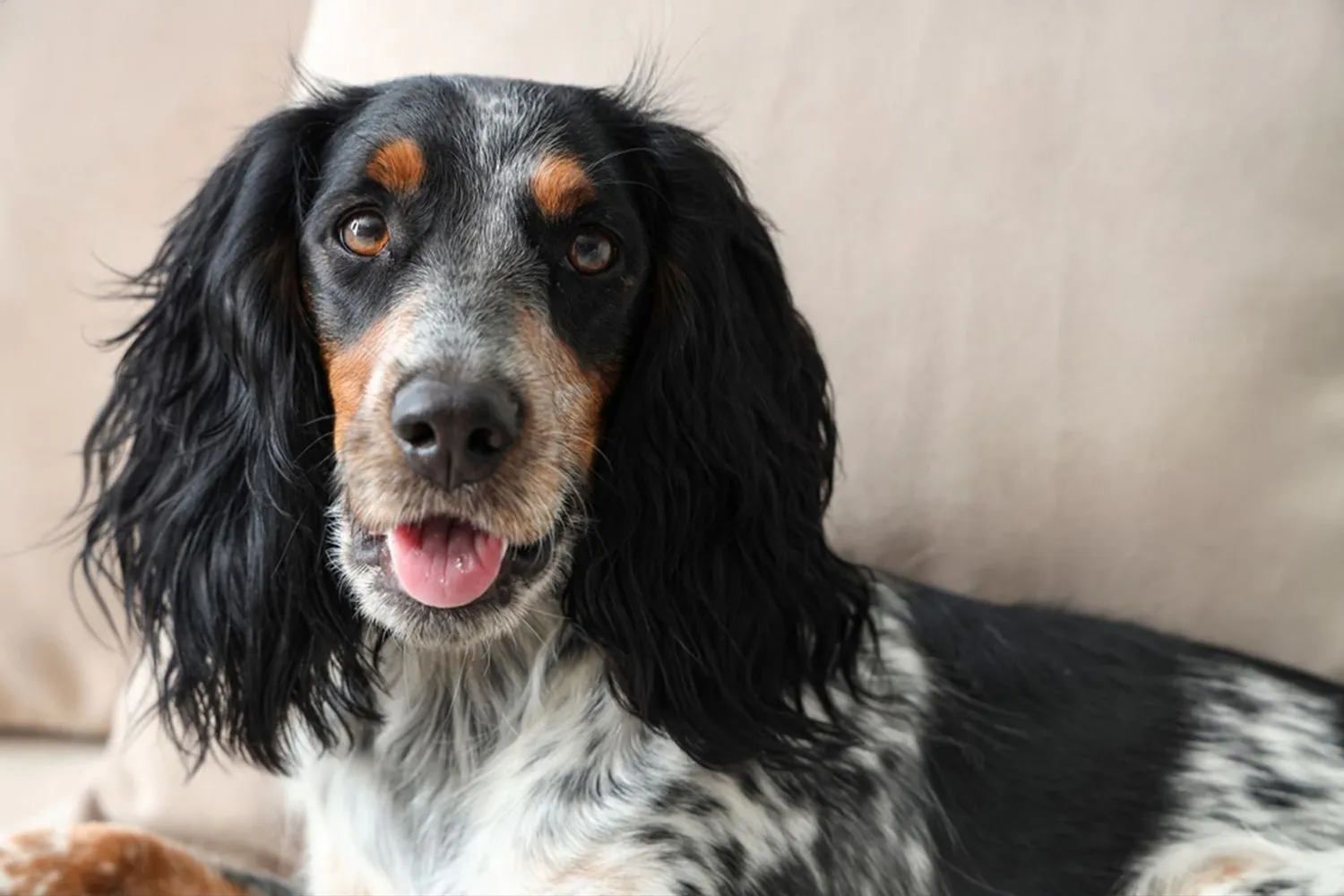
How Do English Cocker Spaniels Behave? A Look at Their Temperament and Personality
If you’ve ever met an English Cocker Spaniel, you’ve probably noticed the bright eyes and that constantly wiggling backside. They’re merry little souls, affectionate to the core and remarkably even tempered. Mine used to curl up under my desk while I worked, then pop up every so often just to rest a chin on my knee, as if to say, “Still love you.” They’re often described as “velcro dogs,” and it’s true they like to be with their people.
Cockers are friendly, trainable, and playful, with a keen desire to please. A few minutes of positive training each day goes a long way with this breed. I remember teaching a friend’s Cocker, Poppy, a tidy “sit stay” in one afternoon simply by using bits of chicken and a cheerful tone. They adore games like fetch and will proudly parade around with a toy in their mouth, tail going like a metronome. It’s easy to forget they were bred as bird dogs, but you’ll be reminded when that nose hits the ground they love following a scent and exploring every hedge.
As watchdogs, they’re surprisingly effective at the “someone’s here!” announcement. Expect a sharp, excited bark when the doorbell rings or the neighbor’s cat strolls by. But here’s the charming twist: once the initial alert is over, a typical Cocker is more likely to greet the newcomer like an old friend. I joke that my Cocker would have given a burglar a guided tour “Treats are this way!” which is why I trained a calm “enough” cue and kept rewards by the door for quiet behavior.
Early socialization is absolutely essential for this breed, just as it is for most dogs. Get them out to experience different people, sights, and sounds while they’re young bus stops, bikes, kids on scooters, people in hats, umbrellas, and friendly, vaccinated dogs. I took one pup to a Saturday farmers’ market and we practiced sitting politely near the flower stalls and ignoring rolling carts. Short, positive exposures like that build confidence and help prevent nervous barking later on.
Now, about that “voice.” English Cockers do enjoy hearing themselves. They’ll comment on doorbells, birds, your phone buzzing sometimes the breeze. To keep it from getting irritating, give them a job: sniffing games, puzzle feeders, and training sessions that work the brain. Teaching “speak” and then “quiet” can actually help, because you’re giving that chatter some structure. And try not to reward the yapping by giving in immediately wait for a beat of silence, then praise.
One big caveat: they don’t like being alone for long stretches. Separation anxiety can creep in if they’re regularly left by themselves. If your schedule keeps you out all day, this may not be the best match. If you’re committed, start small: practice very short departures, leave a long lasting chew or a snuffle mat, and use a crate or pen as a cozy den if your dog finds that comforting. I once set up a camera and gradually built my dog’s solo time from five minutes to two hours over a few weeks, with a radio playing and a frozen stuffed toy waiting. On long days, a dog walker or daycare made all the difference.
Day to day, a well socialized English Cocker is a cheerful companion who wants in on whatever you’re doing walks, couch time, garden puttering. With sensible training and plenty of enrichment, you’ll get a sweet, steady, playful friend who’ll alert you to visitors, charm everyone they meet, and snuggle like it’s their job. Give them your time and attention, and they’ll give you that classic Cocker joy right back.
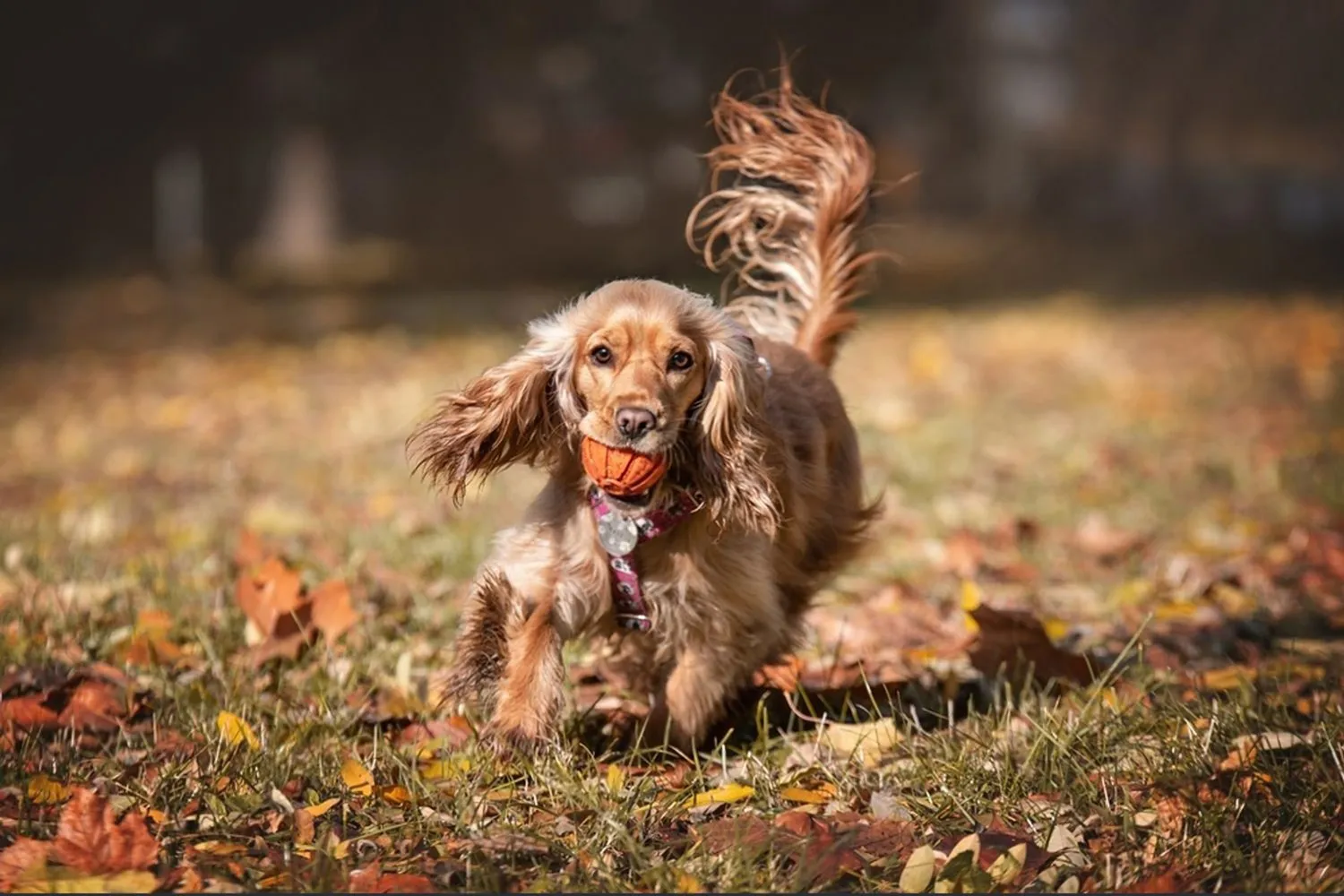
Do English Cocker Spaniels Have Common Health Issues?
I adore English Cocker Spaniels their merry little faces and constantly wagging tails are hard to resist but I’ve learned to budget for their healthcare. Like with any breed, there are a few things to watch for, and planning ahead makes life easier. Vet visits can add up, so I always recommend setting aside a bit each month or getting a good pet insurance plan before you need it.
Some of the more common issues you may encounter include hearing loss, juvenile onset renal failure, hip dysplasia, cataracts, progressive retinal atrophy (PRA), patellar luxation, and hypothyroidism. That sounds like a long list, but knowing what to look for really helps. For example, a Cocker who starts “bunny hopping” or struggling after long walks might be dealing with hip or kneecap problems, and a dog that’s suddenly tired, gaining weight, or getting a dull coat could be showing signs of hypothyroidism. With eye issues like cataracts and PRA, you might notice night blindness or bumping into furniture. I once fostered a Cocker who slowly lost vision; teaching simple touch cues and keeping the furniture layout consistent made a world of difference. And if hearing fades, early hand signal training is a lifesaver I still use them for fun with my perfectly hearing dog.
Prevention and early detection are your best friends. Choose a reputable breeder who screens for hips, patellas, thyroid, kidneys, and eyes, and ask about DNA testing for PRA. Schedule regular eye exams, get those ears checked at every visit, and consider a BAER test for hearing if you’re concerned. Keep them fit and trim extra weight makes joint issues worse and don’t ignore subtle changes in thirst, bathroom habits, or energy. One time I caught a kidney issue early in a friend’s pup simply because we noticed he was draining his water bowl every evening. A little vigilance goes a long way with Cockers, and they’ll repay you with all the joy and snuggles you can handle.
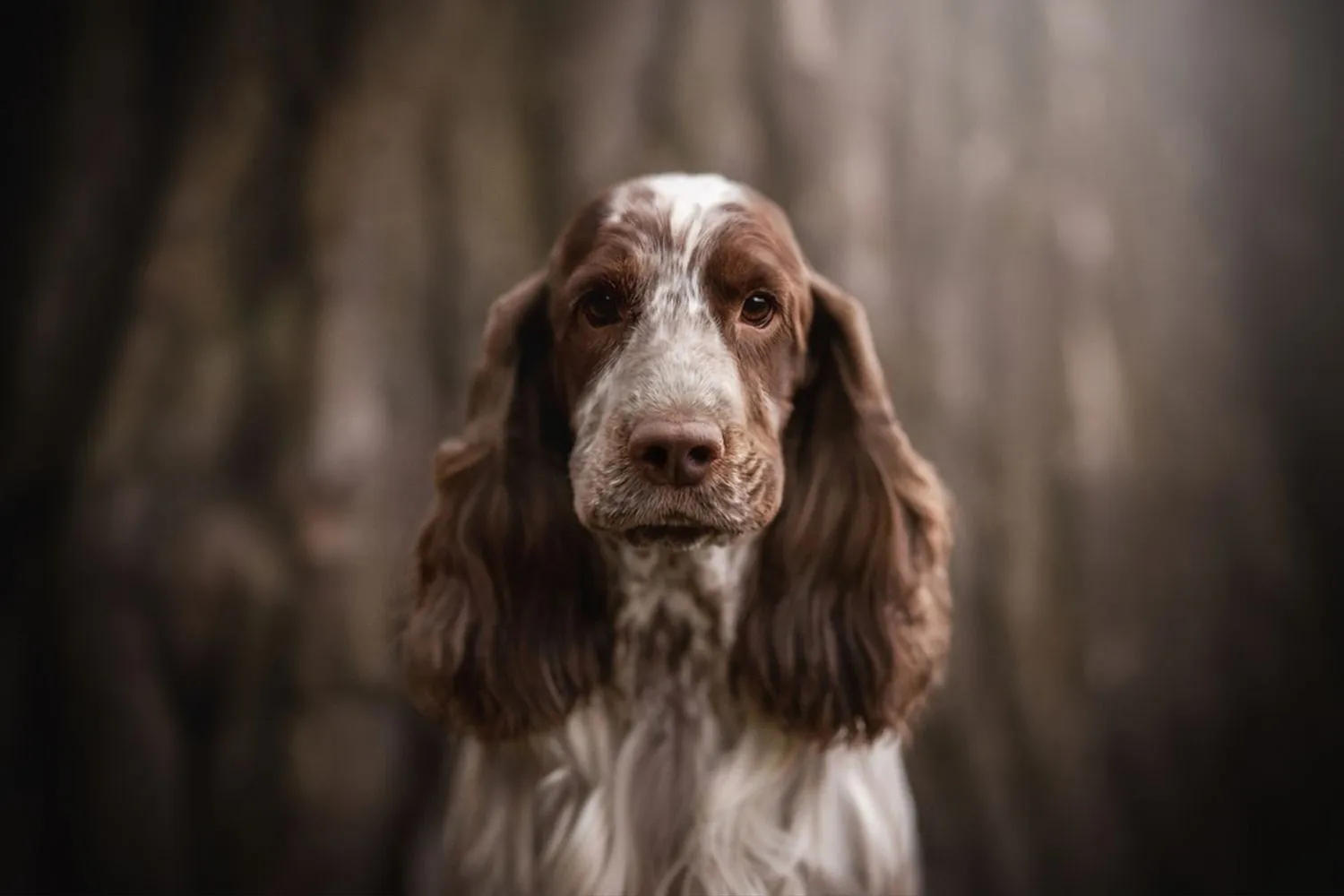
How Long Do English Cocker Spaniels Live?
Most English Cocker Spaniels happily share our lives for about 12 to 15 years, and with a bit of luck and good care, some toddle sweetly into their mid teens. My neighbor’s Cocker, Daisy, made it to 16 and was still chasing sunbeams across the living room rug. Those years fly by, so a few smart habits can make a big difference.
Keep them lean and active. Cockers are experts at the “feed me” eyes, but staying at a healthy weight is one of the best gifts you can give their heart and joints. I aim for ribs you can feel with a light touch and swap a few treats for carrot coins or a quick game of fetch. Daily walks, a little sniffari in the yard, and puzzle toys keep their bodies and brains happy. I learned the hard way that an extra half cup of food “just this once” becomes a routine fast better to measure meals and stick to it.
Regular vet checkups and simple grooming routines help too. Those gorgeous, floppy ears can trap moisture, so I do a quick ear check and gentle clean each week, and always dry them after baths or swimming. A tidy trim around the ears and paws keeps things breezy and reduces tangles. Don’t forget teeth brushing and dental chews go a long way. I’ve caught small issues early just by giving my dogs a once over during couch cuddles.
As they reach their golden years (often around 8 or 9), Cockers may slow down but still love being part of everything. Shorter, more frequent walks, comfy bedding, and a little help with stairs keep them moving comfortably. I like to mix in easy scent games on rainy days less impact, same big smile. With steady care, you can expect a long, tail wagging companionship-12 to 15 years of soulful eyes, silky ears, and a buddy who always knows when you need one more cuddle.
How much should an English Cocker Spaniel be fed?
Most English Cocker Spaniels do well on about 1.5 to 2.5 cups of food per day, split into two meals. Where your dog falls in that range depends on size, age, and activity level. A stocky couch snuggler might sit closer to the lower end, while a lean, busy bee who loves long hikes may need more. I like to start in the middle and adjust weekly: you should be able to feel ribs without digging and see a slight waist from above.
Use a proper measuring cup (or even better, weigh the food with a kitchen scale) so those portions don’t creep up. I learned the hard way with my Cocker, Millie my “generous scoops” turned into a snug harness. Switching to a scale and a slow feeder bowl helped her eat at a calmer pace and made it easier to keep portions steady. If you’re using treats for training, count them as part of the daily total. I often pull a handful of her kibble to use as rewards so we don’t accidentally double dip.
As tempting as it is to share your dinner, skip the “people food” and table scraps. It can lead to weight gain, begging at the table, and digestive upset. My nephew snuck Millie a few pizza crusts once, and she parked herself at his chair for weeks, ever hopeful. Stick to dog safe treats and your regular food, and keep a feeding routine. When in doubt, check the calorie guide on your dog food bag and chat with your vet to fine tune the amount for your pup’s specific needs.
English Cocker Spaniel FAQs
Are English Cocker Spaniels cuddly?
Absolutely. Well bred English Cockers tend to be sweet natured, snuggly companions who want to be part of whatever the family is doing. Mine would curl up like a warm croissant on my lap after a good walk, then pop up if anyone rattled a treat jar. They’re also sensitive souls both physically and emotionally. Raise your voice and they’ll wilt; use a gentle tone and they’ll light up and try their best for you. Think soft training, soft bedding, and a calm routine. They love affection, but they also appreciate a bit of predictability and kind guidance.
Is it better to get a male or female English Cocker Spaniel?
There aren’t major personality differences between the sexes in this breed, and individual temperament matters far more. That said, I’ve often found the boys to be a touch more universally cuddly, bonding with the whole family rather than picking one favorite person. The girls I’ve known were just as loving, but some had a slight “my person” preference. Either way, you’re getting a devoted family dog. Meet a few pups or young adults if you can the right match often picks you. I still laugh about the time a male Cocker sat on all three of my kids in turn like he was interviewing us.
Do English Cocker Spaniels make good pets for seniors?
They can, with the right setup. Adult Cockers are adaptable and sociable, which is why they fit into many homes. But do remember, they’re energetic and can be boisterous, especially in their younger years. If long daily walks and some play sessions sound enjoyable, a Cocker can be a wonderful companion. If that feels like a stretch, consider an older adult rather than a puppy. I helped a retired neighbor adopt a five year old Cocker who was past the zoomies but still loved gentle strolls and puzzle toys. A reliable dog walker or a fenced yard for safe sniffing breaks can also make life easier.
What should I look for when buying an English Cocker Spaniel puppy?
Start with a responsible breeder and questions, lots of them. Ask about health testing so you know where the parents stand this breed commonly has screenings for hips and eyes, and many breeders do DNA tests for conditions like PRA and FN. Good breeders are happy to explain results and how they pair dogs thoughtfully.
A quick checklist I use:
– Health: Proof of hip and eye evaluations; discussion of relevant DNA tests.
– Temperament: Meet the mother (and the father if possible) to gauge friendliness and stability.
– Environment: Puppies raised in a clean, home centered space with everyday sounds and gentle handling.
– Socialization plan: What experiences the pups have had and what the breeder recommends after you bring one home.
– Support: A clear contract, a return policy, and a breeder who welcomes questions.
– Pickup in person: Plan to collect your puppy directly from the breeder good for bonding and a strong sign you’re dealing with someone reputable.
And a little practical advice: ask about grooming and ears before you go home. Cockers are gorgeous, but that silky coat and those lovely ears need regular care. A quick daily brush and weekly ear checks will save you headaches later. One time I skipped a week and regretted it nothing a gentle clean couldn’t fix, but lesson learned.
With a thoughtful match and kind, consistent guidance, an English Cocker Spaniel can be the cheerful, cuddly heartbeat of your home.
Disclaimer:
This article is for informational purposes only and doesn’t replace professional veterinary or training advice. Always consult a certified vet or dog trainer for guidance specific to your pup.

